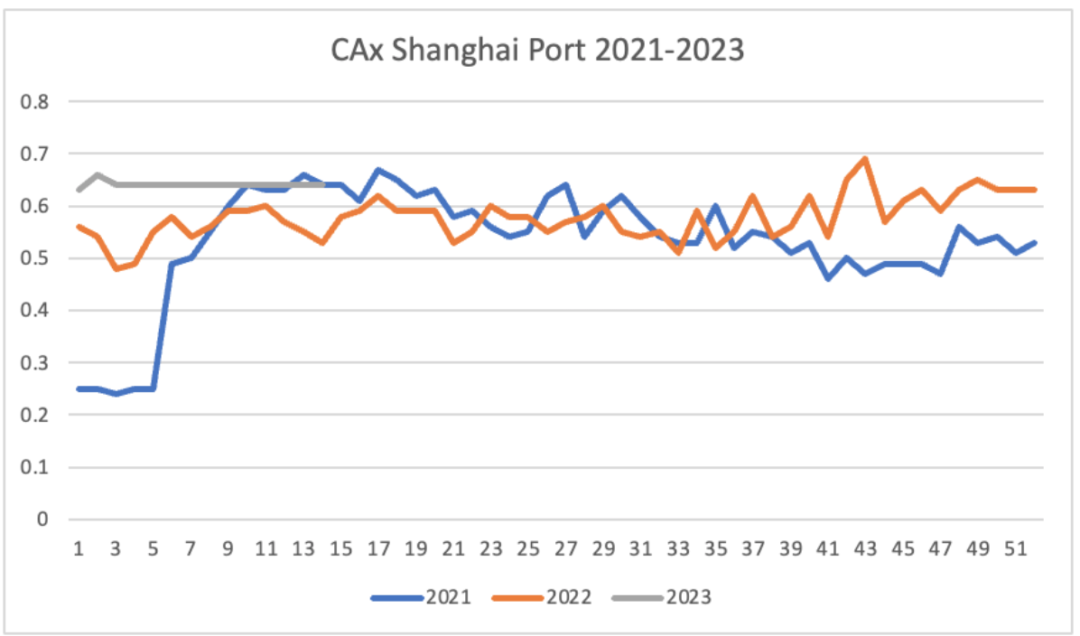China has a “significant container surplus,” Container xChange says
Trend caused by a drop in Chinese exports during first quarter due to softening western demand, but falling prices may soon correct that cycle.

China is facing the risk of an oversupply of containers as empty boxes stack up at its ports, according to analysis by the transportation tech firm Container xChange.
The trend is caused by a drop in Chinese exports during the first quarter of 2023, owing to reduced demand following the October-to-December peak season quarter and to Chinese New Year shutdowns, the firm said. Asia's maritime and supply chain industry is now on a tumultuous ride, experiencing significant disruptions in trade patterns resulting in container prices dipping, the firm’s “April Asia container market forecaster” found.
Hamburg, Germany-based Container xChange said the change can seen in a year-on-year comparison of its Container Availability Index (CAx), which measures the ratio of inbound to outbound containers at a given port, and measures 0.5 if the number is equal.
Traditionally, the CAx values in Shanghai during Q1 have been lower than the 0.5 balance due to a higher number of outbound containers compared to inbound containers. But this year, the trend is just the opposite, showing a CAx value over the 0.6 threshold.
Since the beginning of week 37 (September) in 2022, the Container Availability Index (CAx) has consistently remained higher than in the previous two years. This indicates an increase in inbound containers at the port of Shanghai since September and a continued upward trend.
The trend is also observed in China’s Yantian and Tianjin ports. And overall, ports in China currently have a higher CAx value than they did in 2019, 2020, 2021, and 2022, indicating a significant container surplus in China.
Despite those stresses, market forces could soon begin to correct the imbalance, since the container excess is driving prices down, which will likely attract new business, Christian Roeloffs, cofounder and CEO of Container xChange, said in a release.
“The shipping industry is on the verge of completing its lap in terms of container prices bottoming out, excessive inventory, empty containers, and everything in between. Once it's through with its rep, the demand will crop back up. The alluring box rates present for traders offer a ray of hope for the growth of container demand,” Roeloffs said.
“As the spot rates on significant container trade lanes settle down to levels like those before the pandemic, the trend of de-containerization that prevailed from 2020 to 2022 is now reversing. The container freight rates reached record heights during the peak of the coronavirus pandemic, which resulted in cargo overflowing from containers into minor bulk vessels,” he said.
Copyright ©2024. All Rights ReservedDesign, CMS, Hosting & Web Development :: ePublishing